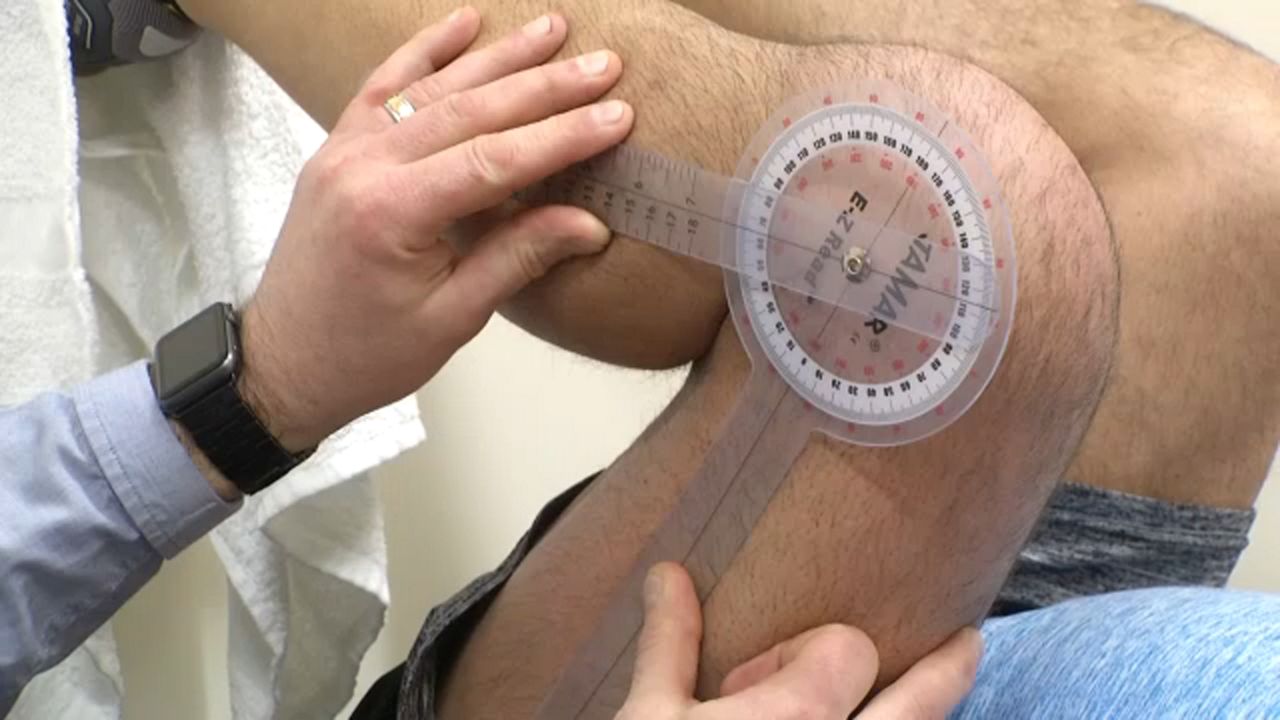If you consistently experience pain in your hands, fingers, or wrists, you might wonder what type of arthritis might be causing you hand problems. The two most common forms of arthritis are osteoarthritis (OA), also called degenerative arthritis, and rheumatoid arthritis (RA), an inflammatory type of arthritis.
OA and RA have many symptoms in common, including pain, stiffness, swelling, and tenderness in the hands and finger joints. If you are diagnosed with arthritis in your hands, your doctor has probably prescribed medications to help you manage symptoms.
RA and OA pain and inflammation can be managed with over-the-counter (OTC) nonsteroidal anti-inflammatory drugs (NSAIDs). RA is also treated with disease-modifying anti-rheumatic drugs (DMARDs) and biologic drugs to reduce the effects of an overactive immune system.
An overactive immune system can lead to high levels of joint inflammation and joint damage. Corticosteroid injections can both be helpful for managing both OA and RA.
Arthritis in the hands is also managed with at-home therapies to ease symptoms. This can include a number of things, including hand exercises, acupuncture, hot and cold therapies, splinting, capsaicin creams, fish oil, SAM-e supplements, meditation, a plant-based diet, and a variety of herbal supplements.
Hand Exercises
The hands have many little bone connections, which makes them more vulnerable to swelling. And regardless of the pain and swelling, you might experience in your hands, you still need to use your hands more than any other body part to complete a variety of daily tasks. This is where hand exercises can help.
While OA and RA affect your hands differently, hand exercises have been shown to improve joint flexibility and range of motion in the hands. Hand exercises might also reduce joint damage and lessen some of your hand symptoms, especially pain.
In a study reported in 2013 in the Annals of Rheumatic Diseases, Norwegian researchers instructed 80 women with hand OA to do hand exercises three times a day for three months. Exercises included rolling fingers into a fist, squeezing a rubber ball, and spreading fingers as wide as possible.
Initially, many of the participants experienced significant hand pain when they started the hand exercises, but as the study progressed, hand and joint pain, grip, and function improved.
In another study reported 2015 in The Lancet, researchers followed 490 people who were treating their hand RA with medication. Half of the study participants continued their regular treatment while the other half were told to add specific hand stretching and strengthening exercises to their treatment plans.
After a year, the group that did the hand exercises had greater improvements in hand flexibility, dexterity, and muscle strength.
While hand exercises can be helpful, before you try them, you should talk to your doctor or a physical therapist. They can help plan an exercise routine that is safe and can best help you. If you experience significant pain while doing hand exercises, stop. Ask your doctor or therapist how much pain is normal and about other exercises that may not hurt as much.
Acupuncture
Acupuncture is an ancient technique used in traditional Chinese medicine that has long been used to treat chronic pain. Research shows it is effective for providing symptom relief for people with carpal tunnel syndrome, a condition that causes numbness, tingling, and pain in the hand because of a squeezed nerve in the wrist.
A study reported in 2017 in the journal Brain found people with carpal tunnel can experience improvements in pain and numbness using acupuncture. In addition, researchers suggested acupuncture—when done correctly—can also offer long-term benefits and continued improvements in hand function.
While acupuncture for RA hand pain and symptoms hasn’t been examined, using acupuncture to manage all over RA pain can curb pain because it boosts endorphins, the body’s natural pain killers.
A 2018 systematic review published in the journal Evidence-Based Complementary and Alternative Medicine finds acupuncture alone or with other therapies can be helpful for managing pain and function and improving quality of life in people with RA without side effects.
Hot and Cold Therapy
A cheap, easy, and effective treatment for arthritis hand pain is hot and cold therapy. Heat therapy can relax muscles and lubricate joints. Cold therapy, on the other hand, reduces inflammation, swelling, and pain from arthritis.
Hot Therapy
Some ways to utilize heat therapy for managing hand pain are:
- Taking a warm shower
- Soaking hands in warm water
- Applying warm compresses or heating pads to inflamed, painful hands
- Treating hands with a paraffin wax bath: Paraffin wax baths involve using a paraffin wax machine and paraffin wax, a type of wax used for candles. Treatment involves warming the wax and completely covering the hands with the warmed wax to provide relief from hand pain and soreness.
Cold Therapy
Cold packs can numb sore hands and reduce inflammation and swelling. The Cleveland Clinic recommends applying cold therapy for 20 minutes at a time. You should remove the ice treatment as soon as the skin feels numb to the touch. To protect your skin, wrap the cold pack in a thin towel.
Ways to utilize cold therapy include:
- Using a bag of frozen vegetables
- Freezing a towel and using it on the achy area
- Making your own cold pack by filing rice in a sock and keeping it in the freezer so it is available for use when you need it
- An ice massage of the hands using a frozen bottle of water
- A lunchbox ice pack
- An instant ice pack that can be cracked to release a chemical that causes the pack to become cold quickly
Some people get the most arthritis pain relief by alternating heat and cold therapy. You can experiment with both to see what gives you the best pain and symptom in your hands and fingers.
Splinting
Splints can be worn to reduce the pain of arthritis and can help with managing tasks that require you to use your fingers, hands, and wrists. A study reported in 2014 in the journal Rheumatology found short-term, night-time use of joint splitting of the distal interphalangeal (DIP) joint was a safe and simple way to reduce pain and improve mobility of the joint.
The DIP joint is the first knuckle located at the top of the finger. Experiencing DIP pain is a sign of arthritis, including OA or RA.
Splinting has also been helpful for managing hand and wrist function in people with RA. A study reported in 2018 in the journal Reumatologia found hand function in women with RA could cause problems with grip and manual dexterity. The researchers concluded that wrist stabilization could improve hand function.
Compression gloves might be an alternative to splinting. People typically wear compression gloves at night. Researchers think these tight-fitting and flexible gloves might improve pain and stiffness in the hands and potentially, improve hand function. While these gloves are safe and commonly used, there is little research on how helpful they might be.
Capsaicin Creams
Capsaicin is the ingredient in chili peppers that gives them their heat. When used in creams, gels, and patches, capsaicin blocks pain signals. According to Harvard Medical School, capsaicin creams cause few systemic side effects.
In a 2011 review in the journal Rheumatology, researchers reviewed the literature on capsaicin gel for hand and knee OA. In five of the trials reviewed, the report’s authors found capsaicin gel was significantly effective for pain relief. In one study reviewed where capsaicin gel was used over 12 weeks, there was a 50% pain reduction.
Before using products containing capsaicin on your hands, try a small amount in one skin area to make sure you are not allergic.
Fish Oil
RA can cause hand and finger pain, swelling, and stiffness. When hands and fingers become inflamed, joints will be warm and tender. Because RA is a symmetric condition, both hands are often affected.
Research on fish oil, as a complementary supplement for RA, finds the two active ingredients in fish, EPA and DHA, can both help with reducing inflammation.
One study reported in 2016 in the Global Journal of Health Science of people who took daily omega-3 supplements found using fish oil supplements helped with reducing RA pain. The study’s authors further noted taking fish oil supplements may reduce the need for analgesic pain relievers.
The 2019 American College of Rheumatology/Arthritis Foundation guidelines do not recommend treating OA with fish oil. This is because most studies have not found fish oil to be effective for treating OA.
SAM-e
When OA affects the hands, it causes symptoms at the base of the thumb, where the thumb and wrist join (the trapeziometacarpal [TMC] or carpometacarpal [CMC] joint), the fingertips (DIP joints), and middle knuckles of the fingers (the proximal interphalangeal [PIP] joints.
OA will cause the cartilage between these joints to wear down so that the bones rub together without a cushion. The rubbing eventually leads to mild inflammation, stiffness, and pain.
S-adenosyl-methionine (SAM-e) is a natural compound generally found in the body and provides anti-inflammatory and pain relief effects. It has also been found to protect cartilage and reduce cartilage damage.
But clinical studies on treating OA with SAM-e supplements are mixed, according to the National Centre for Complementary and Integrative Medicine. Most studies have compared SAMe to NSAIDs for improving pain and joint function, with fewer side effects.
Other studies have compared SAM-e to a placebo and found SAM-e was helping for managing pain as well as preserving cartilage in people using it. SAM-e has not been studied for managing RA.
Meditation for Pain Management
Meditation is an ancient mind and body practice that goes back to Buddhism and other Eastern religions. It puts your focus and attention on the current moment and not letting life’s distractions get in your way.
According to the National Centre for Complementary and Integrative Medicine, meditation can promote “calmness and physical relaxation, improving psychological balance, coping with illness, and enhancing overall health and well-being.” And research shows meditation can be helpful for managing chronic pain associated with conditions like OA and RA.
A 2011 article in the medical journal Rheumatic Diseases Clinics of North America looked at the possible benefits of meditation on people with rheumatological diseases like RA and OA, which the author cites as the most significant causes of chronic pain.
The report’s author further argues that while mind-body therapies can be effective for managing pain, only about 20% of people with chronic pain use them. This 2011 piece also discusses an older study that found only eight weeks of mediation therapy improved pain in people with RA.
Plant-Based Diet
A plant-based diet is one that is rich in fruits, vegetables, whole grains, and other plant-based foods. Some people might also eat meat and dairy along with plant-based foods. This type of diet can provide nutrients that ease inflammation, pain, and swelling associated with arthritis and pain.
One study reported in 2015 in the journal Arthritis found eating a plant-based diet could significantly improve function in people with OA. The research on a plant-based diet for RA is mixed.
Some studies find a plant-based diet might help reduce RA symptoms. However, not all studies show significant connections between this type of diet and improved pain and function. Regardless, it is worth trying as part of your treatment plan to manage RA and to reduce symptoms you may experience in your hands.
Herbal Supplements
A number of herbal supplements have been found to be helpful in managing OA and RA pain. This includes curcumin, ginger, and Boswellia.
Curcumin
Curcumin is the active ingredient in turmeric, a spice that has been around in Ayurvedic and Chinese medicine for thousands of years. Curcumin is considered an anti-inflammatory, and it has been touted for reducing pain and swelling in people with RA.
According to a 2016 systematic review and meta-analysis of eight studies, just 500 milligrams of turmeric twice a day could reduce joint pain and stiffness in both OA and RA. The easiest way to get curcumin in your diet is to take it as a supplement.
Ginger
Ginger is believed to reduce inflammation in people with RA and OA. One 2014 review finds the ingredients in ginger can manage RA pain and also reduce the potential for joint damage.
To increase ginger in your diet, you can make it as a tea or by adding ginger to baked goods or prepared meals. Ginger supplements are also an option, but you should check with your doctor about correct dosing and safety.
Boswellia
Boswellia, also known as frankincense, is known for its anti-inflammatory properties. A review of studies from 2011 finds that Boswellia can help reduce inflammation in people with RA and OA. Boswellia is safe in small doses and available as a tablet or a topical cream.
Supplement Safety
The U.S. Food and Drug Administration doesn’t currently approve herbal supplements, which means their effectiveness and safety profiles have not been studied or confirmed by the FDA. You should always talk to your doctor about whether an herbal supplement is helpful and safe for you to use with your current arthritis treatment plan.
Make sure you purchase herbal supplements from reputable sources. Your doctor or pharmacist can offer recommendations about high-quality supplements.
A Word From Verywell
Hand pain, wrist pain, and problems with your finger joints are symptoms you shouldn’t ignore, especially if they get progressively worse. Talk to your doctor as early as possible to determine the cause of hand pain so that treating it can be addressed as soon as possible.
And hand arthritis—regardless of the arthritic cause—is best managed with a combination of therapies. This includes prescription and OTC medications, natural remedies, and lifestyle approaches to best manage pain, support your mobility, and promote your overall well-being.
It is important to speak to your health care provider before you try any new natural remedies for managing arthritis in your hands. You should also contact your doctor any time swelling, pain, and other arthritis symptoms become worse.
https://www.verywellhealth.com/natural-remedies-for-arthritis-in-hands-5095949
:max_bytes(150000):strip_icc()/GettyImages-85771091-2dfc8261cc624e01b81e92bbb2cc5ada.jpg)



:max_bytes(150000):strip_icc()/knee-arthritis-2548572-FINAL2-85bbbcd306f8481f9caa5f009fec885b.png)